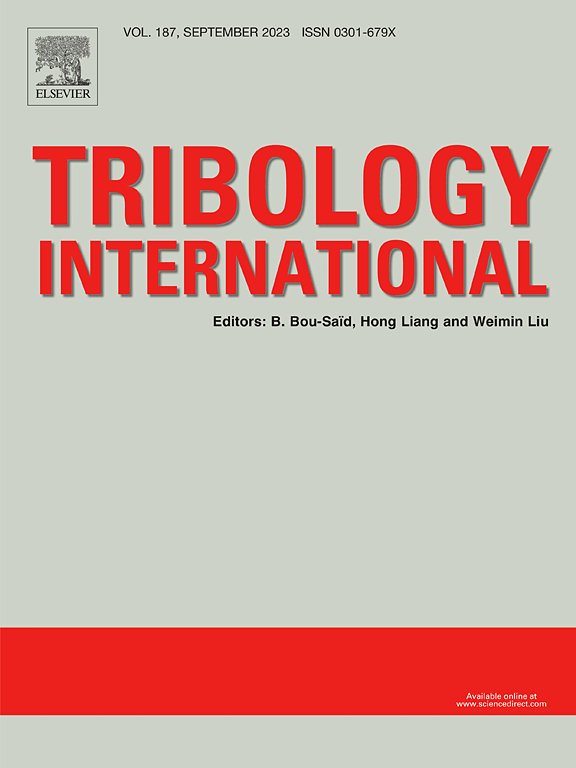Prediction of fretting fatigue lifetime of dovetail joints using a Modified Theory of Critical Distances
IF 6.1
1区 工程技术
Q1 ENGINEERING, MECHANICAL
引用次数: 0
Abstract
Dovetail joints are widely used in mechanical systems and aerospace applications. Under cyclic loading conditions, they are susceptible to fretting fatigue, which can lead to premature failure. Therefore, improving the accuracy of lifetime prediction under fretting fatigue is crucial. In dovetail joints, fretting conditions result in a complex stress-strain distribution on the contact surface, affecting the applicability of different failure criteria. This study examines the stress states across various models and evaluates the suitability of each criterion accordingly. The accuracy of crack initiation angle prediction for two types of dovetail joints is improved. The maximum principal stress serves as a reference for extreme stress, while the stress gradient describes the rate of change in stress. The combination of stress gradient and maximum principal stress provides a more comprehensive representation of stress distribution. The traditional Theory of Critical Distances (TCD) is unable to effectively address the complex stress distribution in stress concentration areas. To overcome this limitation, a Modified TCD (MTCD) is proposed, integrating the effects of stress gradients and maximum principal stress into the original TCD framework. The MTCD method significantly improves the accuracy of predicting the initiation lifetime of both dovetail joints compared to the traditional TCD method. This study not only enhances the understanding of fretting fatigue behavior in dovetail joints but also provides a reliable predictive tool for evaluating more complex models of dovetail joints.
用修正临界距离理论预测燕尾接头的微动疲劳寿命
燕尾接头广泛应用于机械系统和航空航天领域。在循环加载条件下,它们容易受到微动疲劳,这可能导致过早失效。因此,提高微动疲劳下寿命预测的准确性至关重要。在燕尾接头中,微动状态导致接触表面应力应变分布复杂,影响了不同失效准则的适用性。本研究考察了各种模型的应力状态,并相应地评估了每个标准的适用性。提高了两类燕尾接头裂纹起裂角预测的精度。最大主应力作为极端应力的参考,而应力梯度描述应力的变化率。应力梯度和最大主应力的结合可以更全面地反映应力分布。传统的临界距离理论(TCD)不能有效地解决应力集中区复杂的应力分布问题。为了克服这一局限性,提出了一种改进的TCD (MTCD),将应力梯度和最大主应力的影响整合到原始TCD框架中。与传统的TCD方法相比,MTCD方法显著提高了预测两个燕尾接头起裂寿命的精度。该研究不仅提高了对燕尾接头微动疲劳行为的认识,而且为评估更复杂的燕尾接头模型提供了可靠的预测工具。
本文章由计算机程序翻译,如有差异,请以英文原文为准。
求助全文
约1分钟内获得全文
求助全文
来源期刊

Tribology International
工程技术-工程:机械
CiteScore
10.10
自引率
16.10%
发文量
627
审稿时长
35 days
期刊介绍:
Tribology is the science of rubbing surfaces and contributes to every facet of our everyday life, from live cell friction to engine lubrication and seismology. As such tribology is truly multidisciplinary and this extraordinary breadth of scientific interest is reflected in the scope of Tribology International.
Tribology International seeks to publish original research papers of the highest scientific quality to provide an archival resource for scientists from all backgrounds. Written contributions are invited reporting experimental and modelling studies both in established areas of tribology and emerging fields. Scientific topics include the physics or chemistry of tribo-surfaces, bio-tribology, surface engineering and materials, contact mechanics, nano-tribology, lubricants and hydrodynamic lubrication.
 求助内容:
求助内容: 应助结果提醒方式:
应助结果提醒方式:


